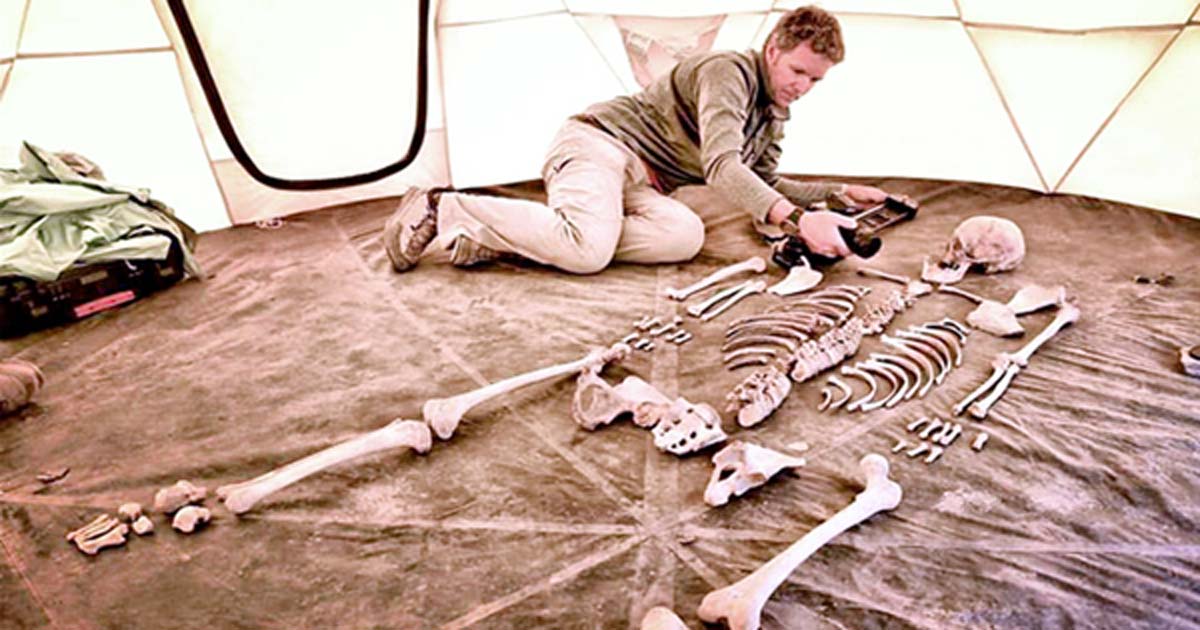Ancient Nepalese People Buried in Caves were Defleshed but Not Consumed
The 1,200-year-old skeleton of a young man found in a cave in Nepal had been defleshed, but researchers are unsure how he died. The lead researcher of this body and other remains said in 2011 that evidence ruled out cannibalism on the part of the ancient Nepalese people.
The Himalayan Times reports that researchers from the University of California used methods from the Standards for Data Collection from Human Skeletal Remains to estimate age and sex. The researchers, led by Mark S. Aldenderfer, also used radiocarbon dating to determine a rough estimate of the age of the remains. Moreover, they tested the man’s DNA to determine his genetic sex.
This is not the first skeleton found in the area, which is in Samdzong in the Upper Mustang District. Since 2009/2010, a couple of dozen skeletons have been found in caves in the region. An article on Archaeology News Network says scientists have found cut marks, or possible signs of defleshing, on 461 of 2,228 human bones found in the caves of Samdzong and Mebruk.

Examples of human cutmarks on the ancient Nepalese remains: (top L-R) frontal; mandible; scapula; rib; thoracic; (bottom L‐R) ilium; humerus; femur. (Jacqueline T. Eng)
“We did not observe any artificial mummification or other treatment of the person and we could not identify cause of death from the bones. There is clear evidence of the defleshing of these people, men and women, young and old,” Professor Aldenderfer said. Aldenderfer is the dean of the school of social sciences at the University of California.
- First evidence of defleshing of human bones in Neolithic Europe found in Italy cave
- Stone Age Orkney Islanders Dismembered Deceased Relatives and Defleshed their Bones
Aldenderfer told National Geographic in 2011 that cannibals process their victims differently, including smashing out the base of the skull to get at the brains and breaking and twisting bones to get at the marrow. That did not happen to these bodies, which he said were defleshed in a respectful way.
Ancient Origins has featured several articles about defleshing practices among ancient and prehistoric peoples, some from as long ago as 7,500 years. In all these stories, researchers said the evidence did not point to cannibalism but rather preparing the body for death in a ritual way.
Researchers discovered the Samdzong caves sites in 2010, and found 10 burial shafts containing mostly collective graves. The burials range in date from 850 BC to 800 AD, Aldenderfer said.
This latest find is different in that just one individual was found, the young man. “Among 10 shaft tombs, most of the chambers were communal in nature, as they housed multiple individuals, while Samdzong cave 7 had a single interment,” Aldenderfer explained to The Himalayan Times.
- Prehistoric Anatolians removed flesh from bones to ease transition to death
- 9,000-Year-Old Skeletons Found in Jordan had been Dismembered, Sorted, and Buried in Homes
He said most of the bodies had been placed on low wooden platforms and buried with ceramics, copper vessels, iron plates, iron daggers and arrow points, bamboo cups, and horse tack - including buckets, bridles, and saddles.
The man in question had been buried with a whetstone of the type used to sharpen blades, a knife handle, and an iron arrow-point with some wood still attached. Researchers have also found remains of goats, sheep, and two horses in the tombs.

Excavating at the caves in Nepal. (Jacqueline Eng/Western Michigan University)
An earthquake in 2015 disturbed the caves and the burials, and scientists do not know exactly how the artifacts were arranged among the remains of the dead. The Archaeology News Network article does not say why, when the bodies were discovered in 2010, the arrangement of the artifacts was unknown though the earthquake didn’t strike until 2015. Perhaps the scientists had not excavated all of the bodies yet.
The same article states that the genetics of the remains from the two caves show the individuals were descended from people who settled this area of the Tibetan plateau about 3,000 years ago.

A gold mask found in the caves of Samdzong, Nepal. Credit: Mark Aldenderfer
The Archaeology News Network story says the University of California is doing the research in association with some members of the Tibetan Department of Archaeology. Jiban Ghimire of SkyDoor Foundation Nepal says the researchers are trying to understand the first people who settled the high Himalayan valleys.
Top image: Researcher and filmmaker Jake Norton photographs a 1,200-year-old skeleton from Samdzong, Nepal. Source: Liesl Clark
By Mark Miller

















